Main Lobby
Introduction
Text-to-speech Audio
Located in the historic Robert A. Long House, constructed between 1909 and 1910 and known at the time as Corinthian Hall, the Kansas City Museum works to preserve and celebrate the history of Kansas City. It places a special emphasis on the city's cultural heritage and the histories of the city's various defining neighborhoods. Museum staff work to collect and preserve artifacts to share stories from Kansas City's diverse history and neighborhoods for public education. The museum also shares the history of the Long Family, in the First Floor galleries with many original artifacts. Corinthian Hall became the city's museum in 1940 and while there have been numerous renovations, many original aspects of the home are still preserved and displayed throughout the space for patrons to enjoy.
Images
First floor main staircase, looking up towards the landing from the left side
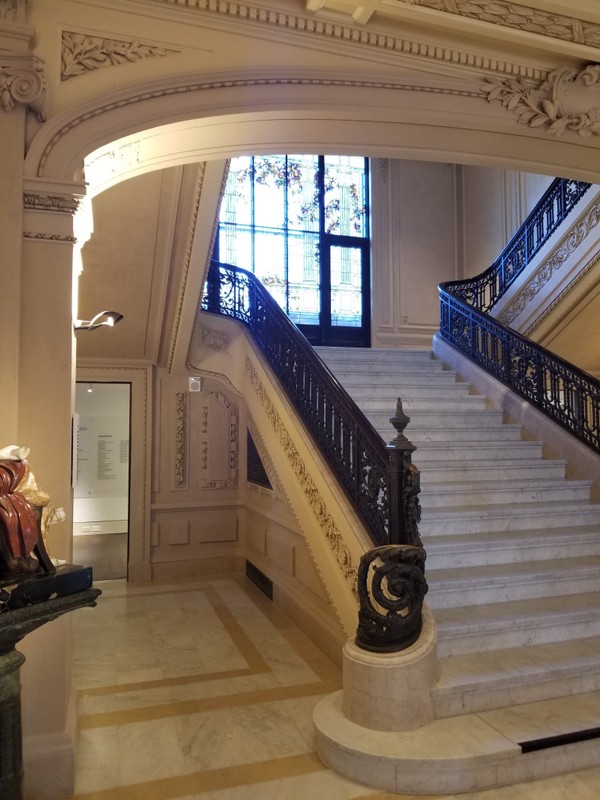
First floor main staircase, looking up towards the landing from the right side
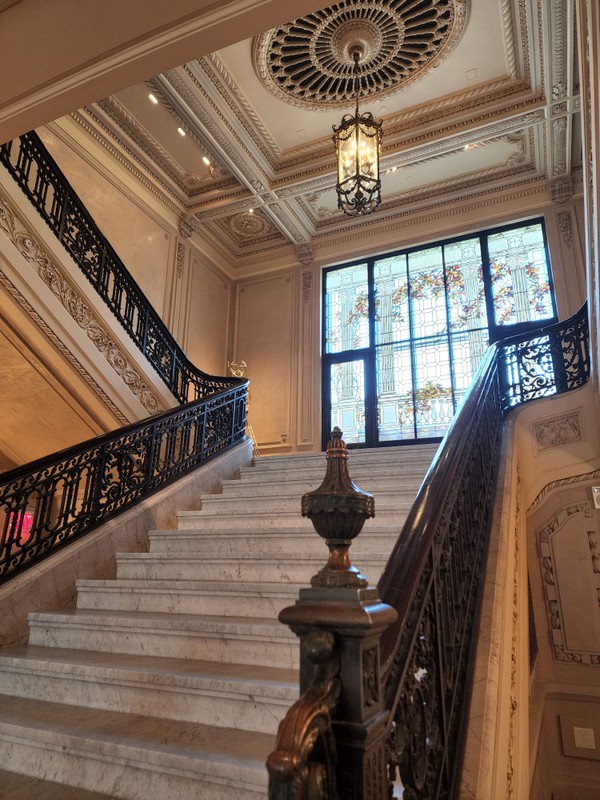
"Meditation" by Ferdinand Vichi, located in the Main Lobby
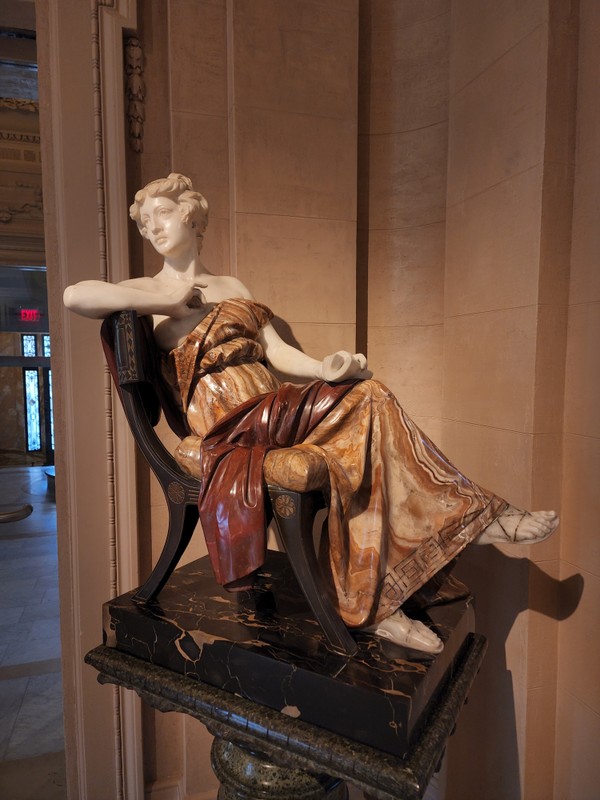
Information on the Kansas City Museum
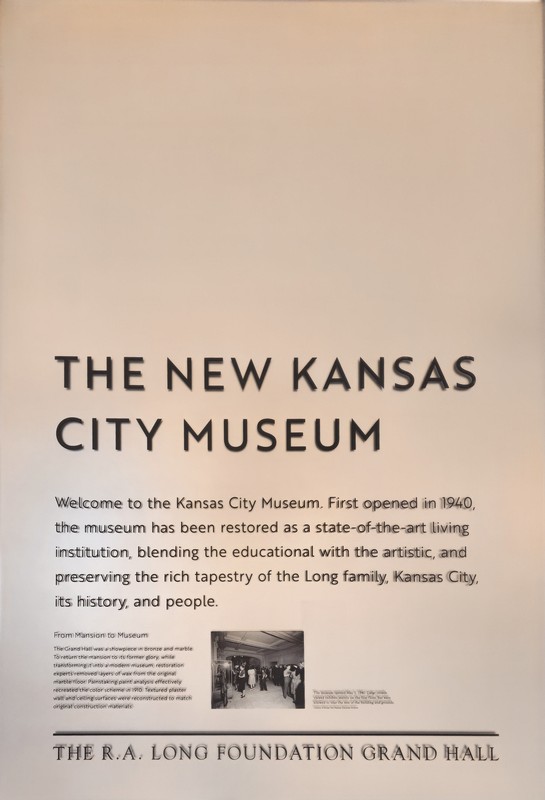
Information on Corinthian Hall and the Kansas City Museum
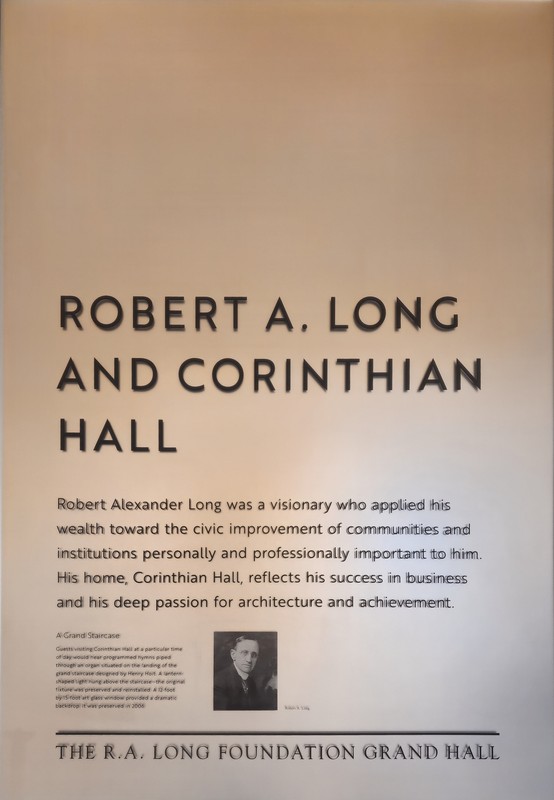
Front view of the main staircase
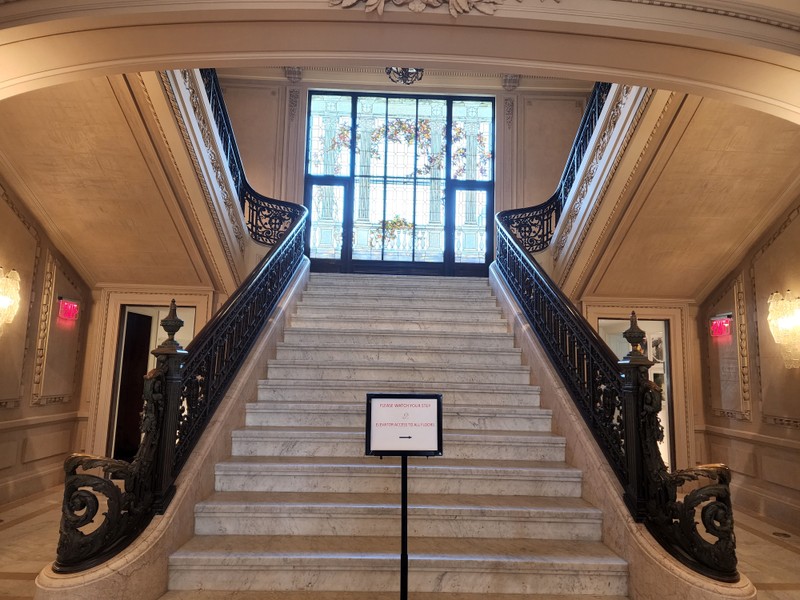
Back view of lobby
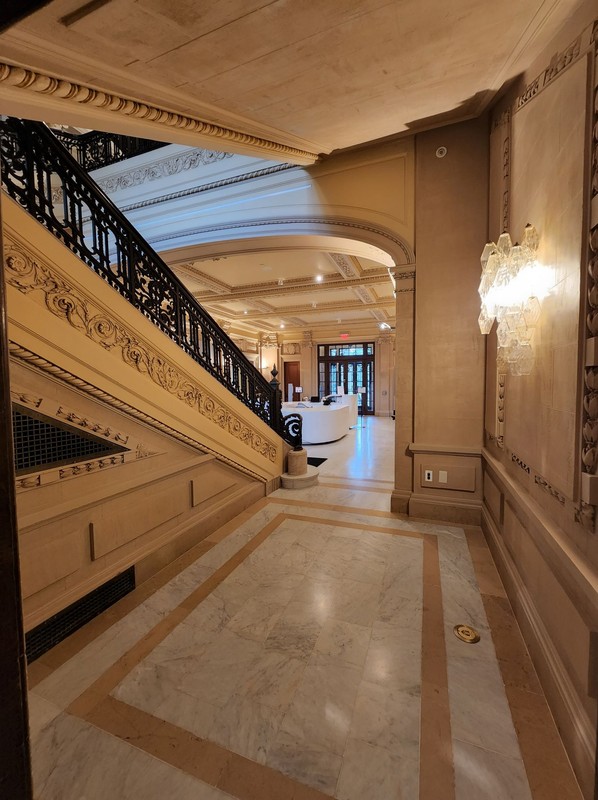
Back view of lobby
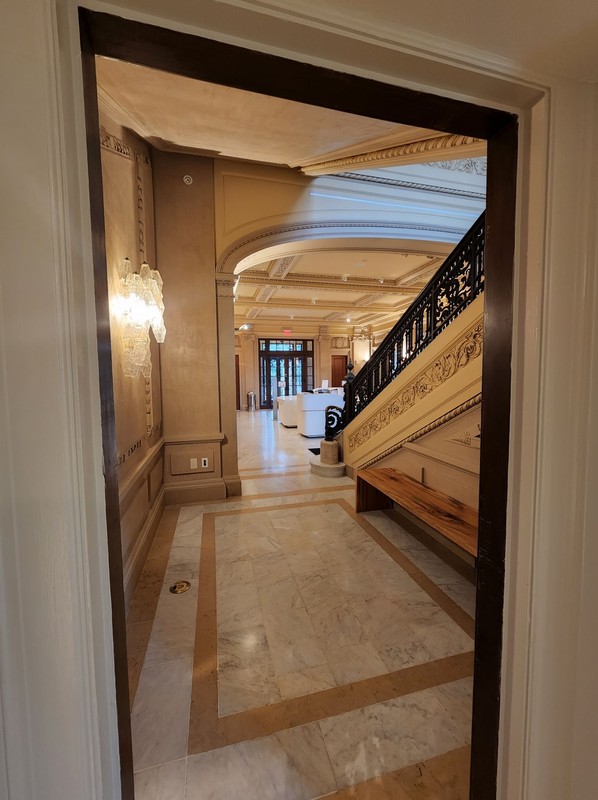
Welcome Desk
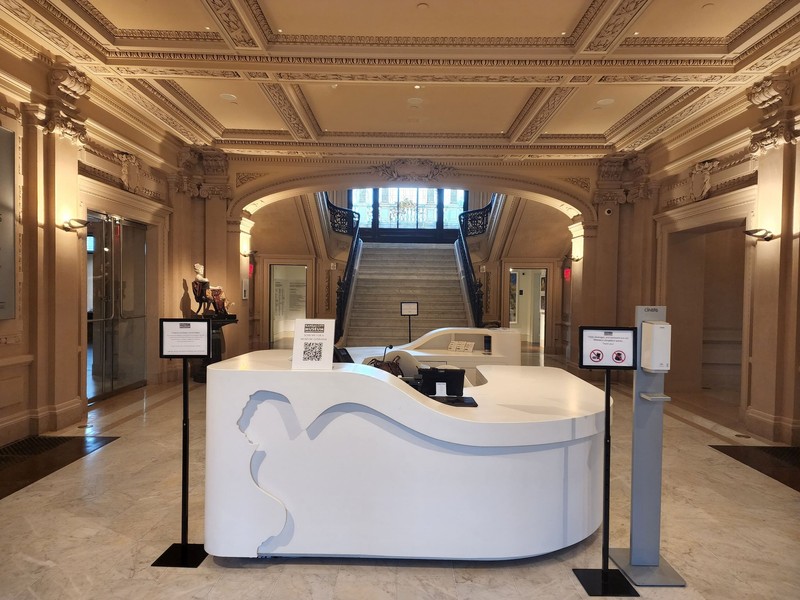
Backstory and Context
Text-to-speech Audio
Robert A. Long represents the beginning of the Kansas City Museum's story. After unexpectedly starting a successful logging business in 1884 with his partner Victor Long, the company grew to the point of needing to relocate to a larger city. Robert moved his family of four to Kansas City in 1891. Mr. Long would later embark on the creation of Corinthian Hall, constructed in 1909-1910. The architect, Henry Hoit, designed the property's six separate buildings, one of which is used for the museum exhibits today. The home was state-of-the-art for the time, featuring a commercial elevator, a billiards room, and even a bowling alley. Through the construction of Corinthian Hall, the Long Family's wealth was on permanent display. After the death of Mrs. Long in 1928 and of Mr. Long in 1934, their two daughters, Loula Long Combs and Sally Long Ellis, removed favorite pieces from the home and placed them in their own homes. After auctioning off remaining items, the sisters put the family mansion up for sale. However, due to the Great Depression, it would sit vacant for 5-years, with the home's caretaker Olive Hoggins keeping it presentable.
After five years without an offer, the Long sisters donated the property to the Kansas City Museum Association, a new organization in the City. The Kansas City Museum would open its doors on May 5, 1940, wasting no time procuring more objects for display. The new Kansas City Museum displayed exhibits combined from the several small local museums that merged to become KCM, such as the Missouri Valley Historical Society, The Dyer Museum, The Public Library Museum, the Board of Education Museum, etc. The new organization also began to collect more. The first director of the museum, conservationist John Ripley Forbes, helped turn vacant buildings into educational centers for children. After reading an article in Life Magazine, He traveled from his home in Massachusetts to Kansas City in order to help Corinthian Hall become a top quality museum. A force to be reckoned with, Forbes assisted with the rehabilitation of the building that eventually led to all four floors of the space being used for the museum, as opposed to only the first floor used at opening.
World War II impacted the museum, causing it to lose much of its Works Progress Administration labor, and with Forbes no longer the director, the museum closed for the war's duration. The museum was sold to the City of Kansas City, Missouri, in 1948, which allowed museum association staff to focus on creating and maintaining exhibits. Natural history and science exhibits were popular in the Museum throughout the 1950s and 1960s, but as the decades progressed, museum staff focused on the museum's relevancy in the city, leading to many continuous changes into the 21st century.
The 2000s marked a time of change for the museum. Museum staff aimed to renovate and rehabilitate the space, and plans were made for a complete renovation of the museum. From 2017 until 2021, J.E. Dunn construction worked on Corinthian Hall. Renovations were completed in October 2021, and the newly reopened museum sported rehabilitated architecture and historical facets, and presented new events and attractions for patrons. The museum still maintains a mission of preserving Kansas City's history and cultural heritage, evident in its displays.
Sources
Mission, Vision, and Values, Kansas City Museum. Accessed April 18th 2022. http://kansascitymuseum.org/mission-and-vision/.
Morrison, Denise, and Anna Marie Tutera. The Journey to Now, Part I, Kansas City Museum. March/April 2020. Accessed April 18th 2022. http://kansascitymuseum.org/wp-content/uploads/2020/05/March-April-2020-KC-Studio-Advertorial-FINAL-PRINTED.pdf.
Morrison, Denise, and Anna Marie Tutera. The Journey to Now, Part II, Kansas City Museum. May/June 2020. Accessed April 18th 2022. http://kansascitymuseum.org/wp-content/uploads/2020/04/May-June-2020-KC-Studio-Advertorial-FINAL-PRINTED.pdf.
Morrison, Denise, and Anna Marie Tutera. The Journey to Now, Part III, Kansas City Museum. July/August 2020. Accessed April 18th 2022. http://kansascitymuseum.org/wp-content/uploads/2020/07/July-August-2020-KC-Studio-Advertorial-FINAL-PRINTED.pdf.
Morrison, Denise, and Anna Marie Tutera. The Journey to Now, Part V, Kansas City Museum. November/December 2020. Accessed April 18th 2022. http://kansascitymuseum.org/wp-content/uploads/2021/01/November-December-2020-KC-Studio-Advertorial-FINAL-PRINTED.pdf
